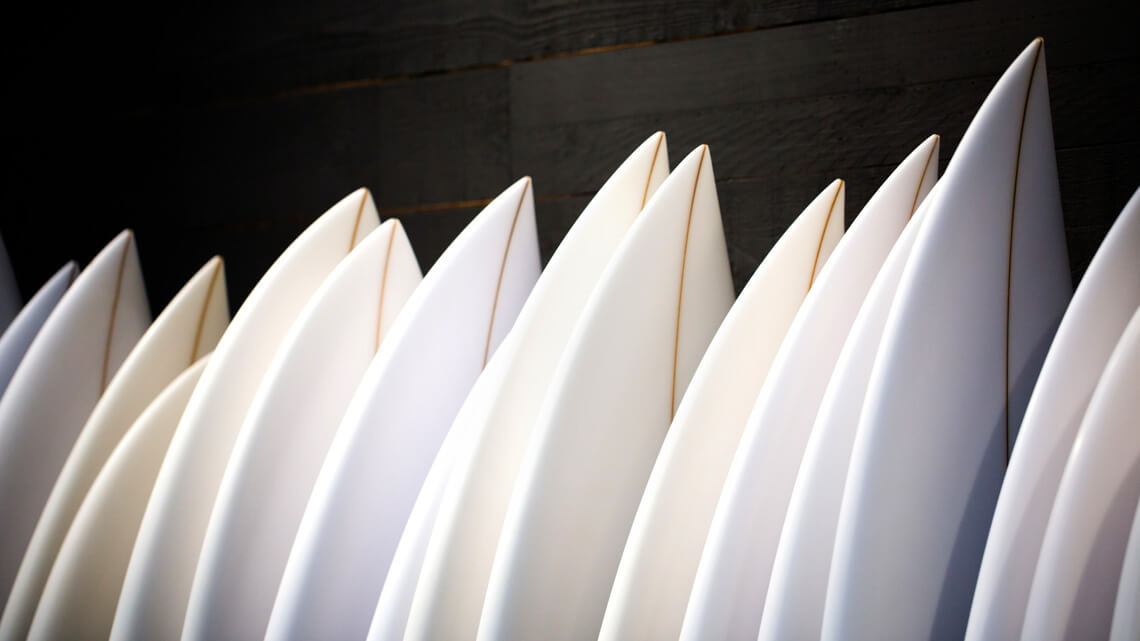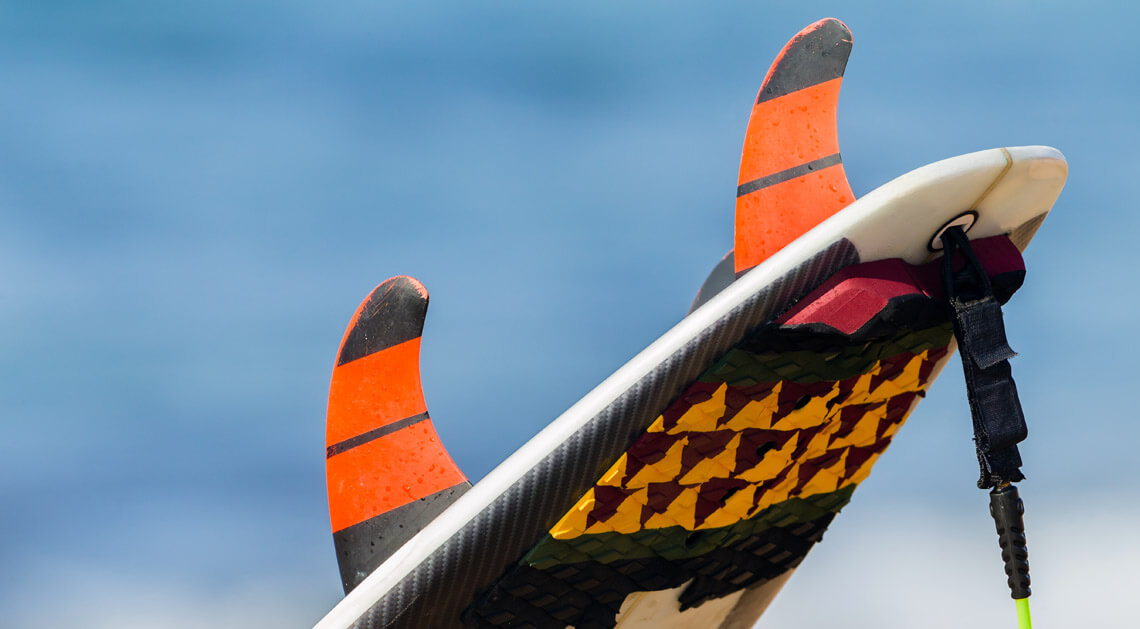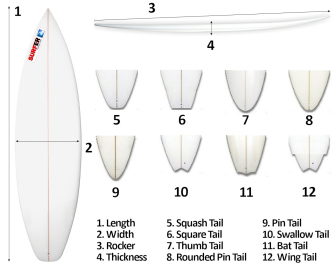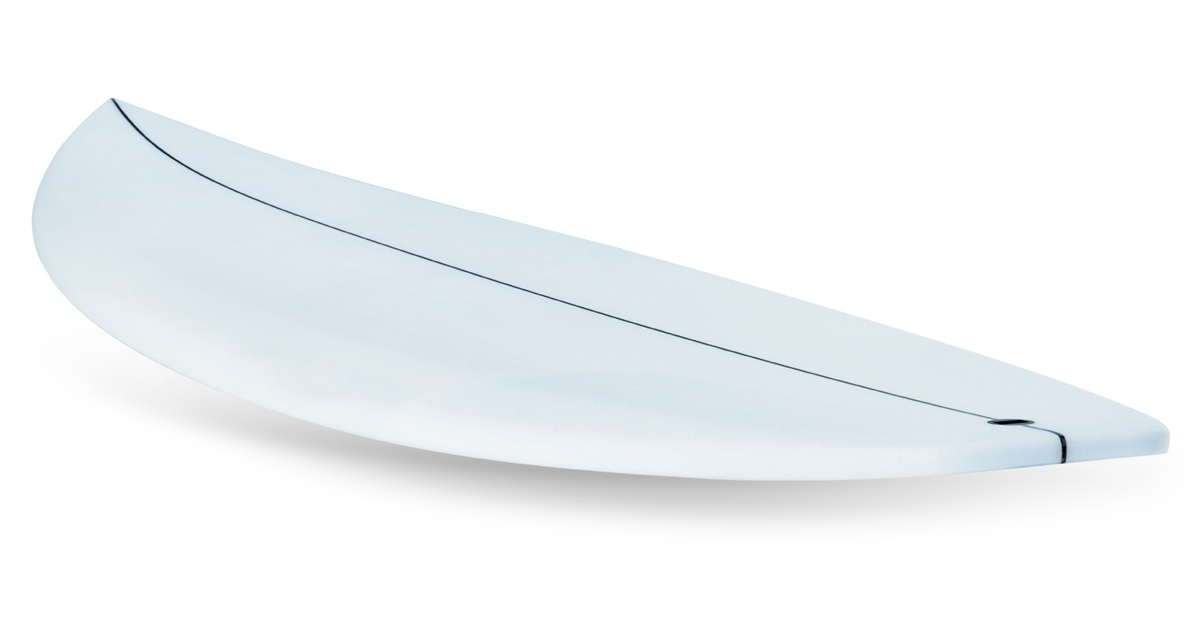Need a new surfboard? Do you want to learn how to surf? Are you buying your first surfboard or an all-around backup board? Looking for a different type of surfboard?
There are a few factors that come into play when choosing a surfboard. The first step to determining the right surfboard for your body type is to note down your weight and experience level.
Most surfers fall into the first two of the following four categories:
- Beginner;
- Intermediate;
- Advanced;
- Pro;
As a rule of thumb, first-timers to the sport should get thicker and longer surfboards. Novice surfers need extra flotation and stability to paddle for the first waves and to help them stand up on the board after catching the wave.
However, a taller and heavier intermediate surfer will also need a slightly bigger board compared with a shorter and lighter intermediate rider.
SurferToday developed a size chart for surfboards to help you navigate the several variables at stake.
To convert kilograms (kg) to pounds (lb), note that 1 kilogram equals 2.2 pounds. To convert meters (m) to feet (ft), note that 1 meter equals 3.3 feet.
Choose from five different types of boards: shortboard, fish, funboard/Malibu, longboard, and stand-up paddleboard (SUP). Enjoy surfing!

Your Weight
45 - 63 kg
63 - 72 kg
72 - 81 kg
81 - 90 kg
+ 90 kg
Your Board
6' 2'' - 6' 4''
6' 4'' - 6' 8''
6' 6'' - 6' 10''
6' 10'' - 7' 4''
+ 7' 4''
Your Weight
45 - 63 kg
63 - 72 kg
72 - 81 kg
81 - 90 kg
+ 90 kg
Your Board
6' 1'' - 6' 4''
6' 3'' - 6' 8''
6' 5'' - 6' 10''
6' 9'' - 7' 4''
+ 7' 8''
Your Weight
45 - 63 kg
63 - 72 kg
72 - 81 kg
81 - 90 kg
+ 90 kg
Your Board
6' 1'' - 6' 4''
6' 3'' - 6' 8''
6' 5'' - 6' 10''
6' 9'' - 7' 4''
+ 7' 8''
Your Weight
45 - 63 kg
63 - 72 kg
72 - 81 kg
81 - 90 kg
+ 90 kg
Your Board
5' 10'' - 6' 2''
5' 10'' - 6' 2''
6' 4'' - 6' 7''
6' 8'' - 7' 2''
7' 6'' - 8'
Your Weight
45 - 63 kg
63 - 72 kg
72 - 81 kg
81 - 90 kg
+ 90 kg
Your Board
7' 2'' - 7' 4''
7' 4'' - 7' 6''
7' 6'' - 7' 8''
7' 8''
+ 7' 8''
Your Weight
45 - 63 kg
63 - 72 kg
72 - 81 kg
81 - 90 kg
+ 90 kg
Your Board
7' 0'' - 7' 2''
7' 2'' - 7' 4''
7' 6''
7' 7''
7' 8''
Your Weight
45 - 63 kg
63 - 72 kg
72 - 81 kg
81 - 90 kg
+ 90 kg
Your Board
9' 2'' - 9' 4''
9' 4'' - 9' 6''
9' 6'' - 9' 8''
9' 8'' - 10'
+ 10' 0''
Your Weight
45 - 63 kg
63 - 72 kg
72 - 81 kg
81 - 90 kg
+ 90 kg
Your Board
9' 0 - 9' 2''
9' 0 - 9' 2''
9' 4 - 9' 6''
9' 4 - 9' 6''
10' 0''
Your Weight
45 - 63 kg
63 - 72 kg
72 - 81 kg
81 - 90 kg
+ 90 kg
Your Board
10' 0'' - 10' 8''
10' 0'' - 10' 8''
11' 3'' - 12''
11' 8'' - 12''
11' 11'' - 12'
Your Weight
45 - 63 kg
63 - 72 kg
72 - 81 kg
81 - 90 kg
+ 90 kg
Your Board
10' 0'' - 10' 6''
10' 0'' - 10' 6''
11' 0'' - 11' 6''
11' 0'' - 11' 6''
11' 11'' - 12'

How to Pick the Right Surfboard?
You have finally decided to buy yourself a new or your first surfboard.
But what size is the best? And what shape should you pick? What are the differences between a shortboard, a fish, a funboard, a longboard, or a stand-up paddleboard (SUP)?
Beginner surfers should always get a surfboard with an above-average paddling/flotation ratio. Super stable surfboards are easier to paddle, get in the waves faster, and are more forgiving when the pop-up moment arrives.
So, if you're in the early stages of surfing, get a good beginner surfboard. They offer a lot of volume and flotation and will definitely help you stand up faster.
As a general rule of thumb, the right surfboard for an intermediate surfer is usually one foot taller than his height.
If you ride small-to-medium-sized waves, you can always pick a longboard or a funboard/malibu.
Features
After carefully selecting the right size based on your weight and level of experience in surfing, it's essential to explore and understand the main features of a surfboard.
The main surfboard characteristics are:
- The template;
- The outline curve;
- The width;
- The thickness;
- The volume (in liters)
- The location of the wide point;
- The nose (shape and width);
- The rocker;
- The tail (shape and width);
- The rails;
- The bottom curves and channels;
- The fin setup;
PU/PE vs. EPS/Epoxy
Most surfboards are made of a polyurethane (PU) blank/core with a top coat of polyester (PE) resin, despite the environmental issues associated with these materials.
However, the leading surfboard shapers and manufacturers are already moving towards greener alternatives, such as algae and expanded polystyrene (EPS) blank/core with epoxy resin.
Confused? Learn more about the most common surfboard foam blanks. It will help you decide which one suits you best.

Surfboard Shapes and Design
Surfboard designers know which materials allow surfers to improve their overall performance in the waves and how they impact board weight, design, and resistance to impact.
A rounder template/outline will force you to draw longer curves, resulting in a more laid-back surf. However, more area also means greater buoyancy and more planing lift potential.
That is why width and length are critical variables. Wider boards offer more flotation and are the perfect choice for small, mushy waves.
The rocker is considered by many shapers the most important feature of a surfboard. Surfboards with more rocker are usually slower in a straight line and harder to paddle. On the other hand, more rocker means less nosediving.
The rounded pin, round, squash, and rounded tails are extremely popular in modern equipment because they hold the surfboard quite well in nearly all types of surf conditions.

So, in a dream scenario, and if you had to take four surfboards to a distant surfing island for the rest of your life, the ultimate surf quiver would include two shortboards, one funboard/Malibu, and a longboard.
The truth is that there is a wide range of surfboard types for all sorts of waves and riding styles, and each template has a different impact on performance.
Remember that the best surfboard is the surfboard that you enjoy riding the most. However, you should definitely make your decision based on the idea that there is the right board for your body type and experience in the surf.
Learn how to read the dimensions written on a surfboard. Know how to choose the best surf fins. Get ready to shape a surfboard.
